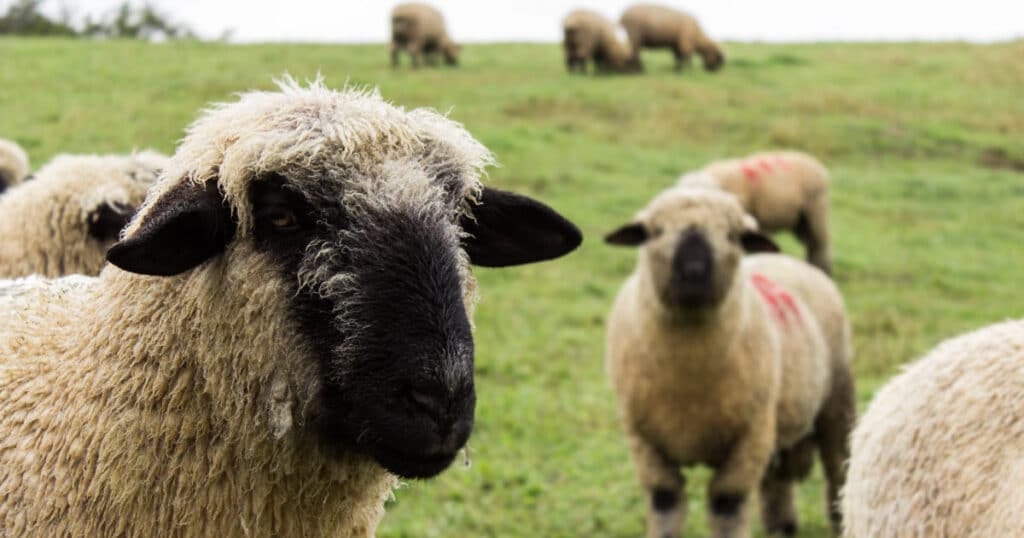The Hampshire sheep breed is primarily raised for meat production, though the breed has also emerged as a popular choice for youngsters in 4-H and FFA rings due to its dramatic, flashy appearance in the show ring.
Hampshire lambs are fast-growing and at maturity the Hampshire breed is heavy boned with a lean carcass.
The History of the Hampshire Breed
Originating in the county of Hampshire in the south of England, the first lines of this breed were a combination of the Berkshire Knot, Southdown, Old Hampshire and Wiltshire Horn sheep breeds.

In 1860 Hampshires were introduced to the United States, but the breed disappeared during the Civil War and were not reintroduced until the 1880’s.
What do Hampshire Sheep Look Like?

As one of the larger breeds, the Hampshire is easy to distinguish from Suffolks by their black legs and faces.
Unlike the Suffolk, Hampshires have some wool on their heads and legs and this breed should display a solid topknot of unbroken wool.
Hampshire sheep grow rapidly and are a common choice as terminal sires in crossbreeding programs due to their large, lean carcasses and rapid growth rate.
Breed Information
| Mature Body Weight | Ram: 250 – 350 pounds Ewe: 175 – 250 pounds |
| Average Fiber Diameter | Micron 25 – 33 USDA Wool Grade 46’s – 58’s |
| Grease Fleece Weight | 6 – 10 pounds |
| Wool Staple Length | 2.5 – 4 inches |

For more information about Hampshires or to find a breeder near you, visit the American Hampshire Sheep Association website.

